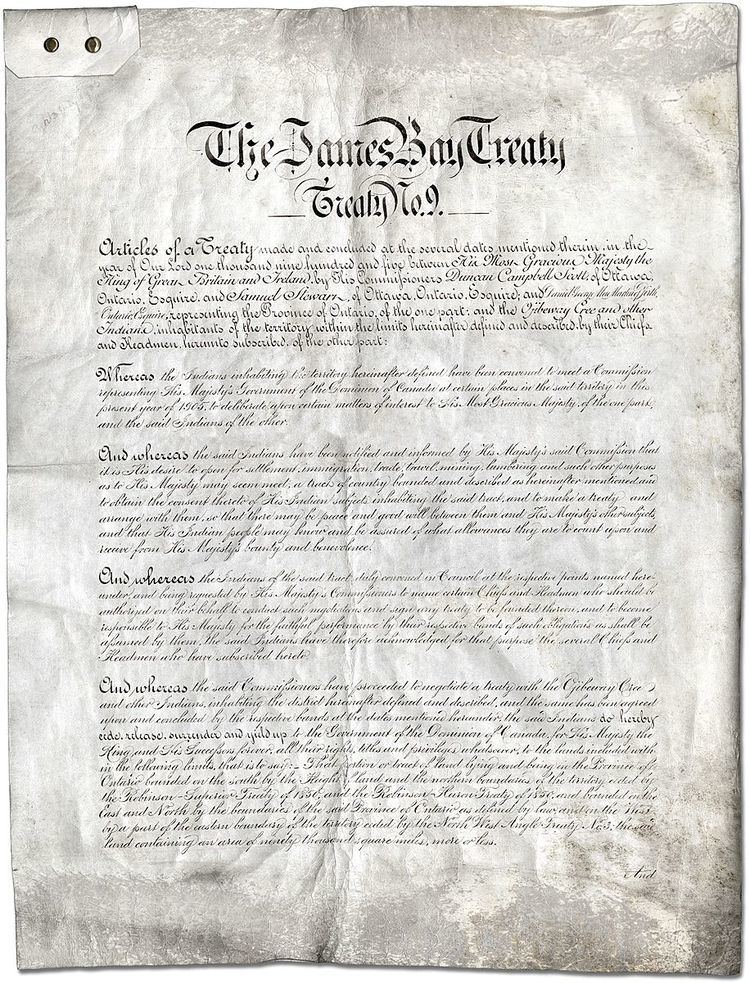Treaty 9 was an agreement established in July 1905, between the Government of Canada in the name of King Edward VII and various First Nation band governments in northern Ontario. One First Nation community in the bordering Abitibi region of northwestern Quebec is included in this treaty. It was also known as the "James Bay Treaty," since the eastern end of the affected treaty territory was at the shore of James Bay. Additional signings of First Nations, or adhesions, were conducted in 1906. Further adhesions involving the Ojibway and Swampy Cree tribes were completed in 1929 and 1930.
According to journalist Ron Grech (2011-01-07), the personal diary of Daniel MacMartin who was the Treaty commissioner for the Government of Ontario when the agreement was signed in 1905, written more than 100 years ago but rediscovered by historians at the Queen's University archive, triggered a legal challenge for mining access on First Nation lands. MacMartin's diary suggested "First Nation leaders may have been misled by government negotiators as they were signing Treaty No. 9, says Murray Klippenstein, legal representative for Mushkegowuk Council."
29 June 1905: Duncan C. Scott, Samuel Stewart are appointed as treaty commissioners by the Government of Canada. Daniel G. MacMartin is appointed by the province of Ontario. They would jointly conduct the negotiations with northern Ontario First Nations communities.3 July 1905: Agreement between province of Ontario and the federal Canadian government in support of Treaty 912 July 1905: Osnaburgh signing19 July 1905: Fort Hope signing25 July 1905: Marten Falls signing3 August 1905: Fort Albany signing9 August 1905: Moose Factory signing21 August 1905: New Post signing7 June 1906: Abitibi signing20 June 1906: Matachewan signing7 July 1906: Mattagami signing16 July 1906: Flying Post signing19 July 1906: Fort Hope signing25 July 1906: New Brunswick House signing9 August 1906: Long Lake signing5 July 1929: Big Trout Lake signing18 July 1930: Windigo River signing25 July 1930: Fort Severn signing28 July 1930: Winisk signing2011 Diaries kept by Daniel D. MacMartin, treaty commissioner for the Government of Ontario when the agreement was signed in 1905, were discovered by historians at Queen's University archives. Legal counsel Murray Klippenstein claimed that in MacMartin's diaries oral promises had been made that contradicted the written Treaties and supports Elders' claims. He quoted from Commissioner MacMarten’s diary, "it was explained to them that they could hunt and fish as of old" and "they were not restricted as of territory" and "they could hunt wherever they pleased." Klippenstein argued that oral promises that are part of the Treaty should override legislation like the Far North Act.The treaty is the subject of a 2014 documentary film by Alanis Obomsawin, entitled Trick or Treaty?

